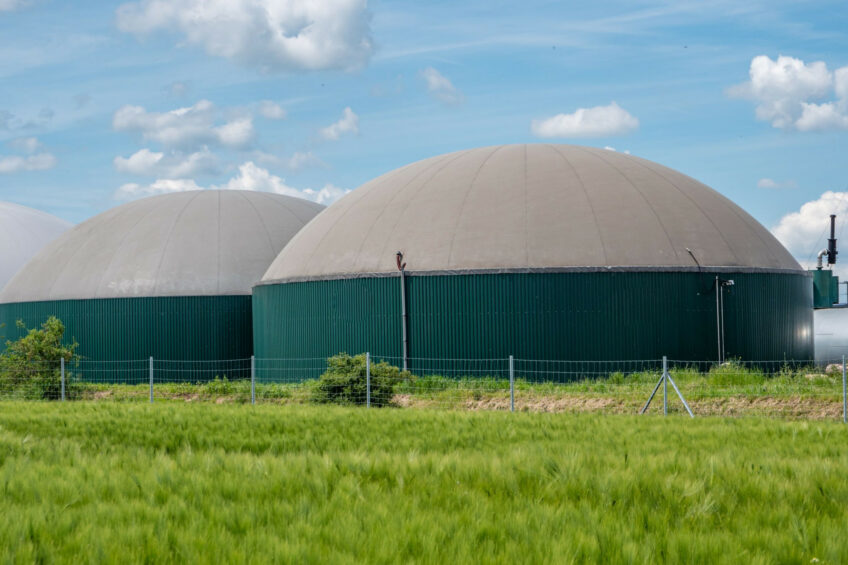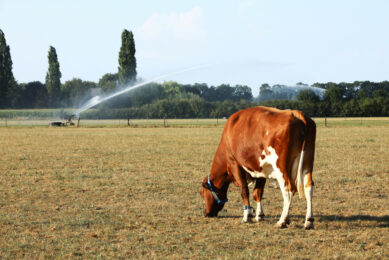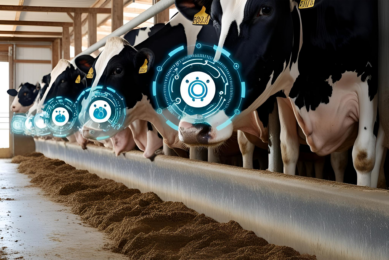UK: Higher methane from slurry – cost-savings possible

New research suggests methane emissions from slurry stores may be up to 5 times higher than what official statistics suggest. However, alarm bells are not yet sounding because the same research also looked at the potential of turning this methane into energy, which could reduce farm costs and increase income.
Conducted by the University of East Anglia (UEA) and the International Fugitive Emissions Abatement Association (IFEAA), the research is based on measurements from 2 dairy farms in Cornwall, England.
Saved costs
Together with a growing body of international field research, it suggests that the ‘Tier 2’ calculations used by countries to report their emissions annually to the Intergovernmental Panel on Climate Change (IPCC) may not be robust.
Using the UK as an example, the study also shows that if captured and turned into biogas, emitted methane could be worth more than £400 million a year to the UK dairy sector in saved fuel costs, or around £52,500 for an average-sized dairy farm.
The technology required to capture methane already exists, and if rolled out across the EU dairy herd, the conversion of methane to biofuel could reduce emissions equivalent to an estimated 5.8% of the remaining global temperature rise budget if the temperature were to be kept to 1.5°C of warming.
Current National Inventories of greenhouse gas emissions report that enteric emissions – those coming directly from animals’ digestive systems – are 3-9 times greater than those from manure management, including the storing and spreading of slurry and manure.
New findings and manure management
However, the findings between enteric emissions and those from manure management could be much closer to 50:50. The authors also call for greater focus from researchers and political leaders on emissions from manure management.
Prof Neil Ward of the Tyndall Centre for Climate Change Research at UEA: “The standard international methodology looks to be underestimating methane emissions from slurry storage. Fortunately, we have the technology to turn this problem into a business opportunity for farmers who can reduce energy bills and become energy independent if they capture and make use of methane as a fuel. If emissions from manure management are being significantly underestimated, this not only means that official estimates are inaccurate, but also that priorities around mitigation options might be being distorted. This research therefore represents an urgent call for action and further work to better understand methane emissions from manure management.”
Higher emissions – slurry lagoons measured
The researchers analysed measurements of slurry lagoon emissions from the 2 farms during 2022-23. The lagoons were covered with airtight covers and the methane captured. They found slurry lagoons produce far more methane than suggested by official estimates, such as those based on methods developed by the IPCC. Actual emissions from the farms were 145kg and 198kg per cow per year, respectively. This is 4-5 times higher than the existing official figure of 38kg per cow reported in the UK’s National Inventory.
The resulting recommendations for government include research and development priorities, increasing grants for slurry covers and extending such financial support to associated gas processing equipment.
Net Zero
Prof Penny Atkins, IFEAA CEO, said: “The technology exists for capturing, processing and utilising the methane that is currently lost to the atmosphere and contributing to greenhouse gas accumulation, and looks economically promising particularly if an incentives framework for capital investment on farms, coupled with regulatory support, can be implemented. The cumulative contribution of methane from dairy farm manure management is significant and this data shows we must act now to curb emissions.”
The researchers also suggest simplifying planning and permitting processes, and tax breaks for supply chain investment in methane recovery and use, such as investments by milk processors in supplier farms.
George Eustice, former UK secretary of state for Department for Environment, Food and Rural Affairs and chair of IFEAA, said: “Methane is a potent but short-lived greenhouse gas and reducing emissions is critical to the pathway to Net Zero and limiting global temperature rises to 1.5 degrees. The bad news is that emissions from agriculture are higher than previously thought, but the good news is that this methane is easily captured and used as an alternative to fossil fuels creating an additional income stream for farms.”
Join 13,000+ subscribers
Subscribe to our newsletter to stay updated about all the need-to-know content in the dairy sector, two times a week.










